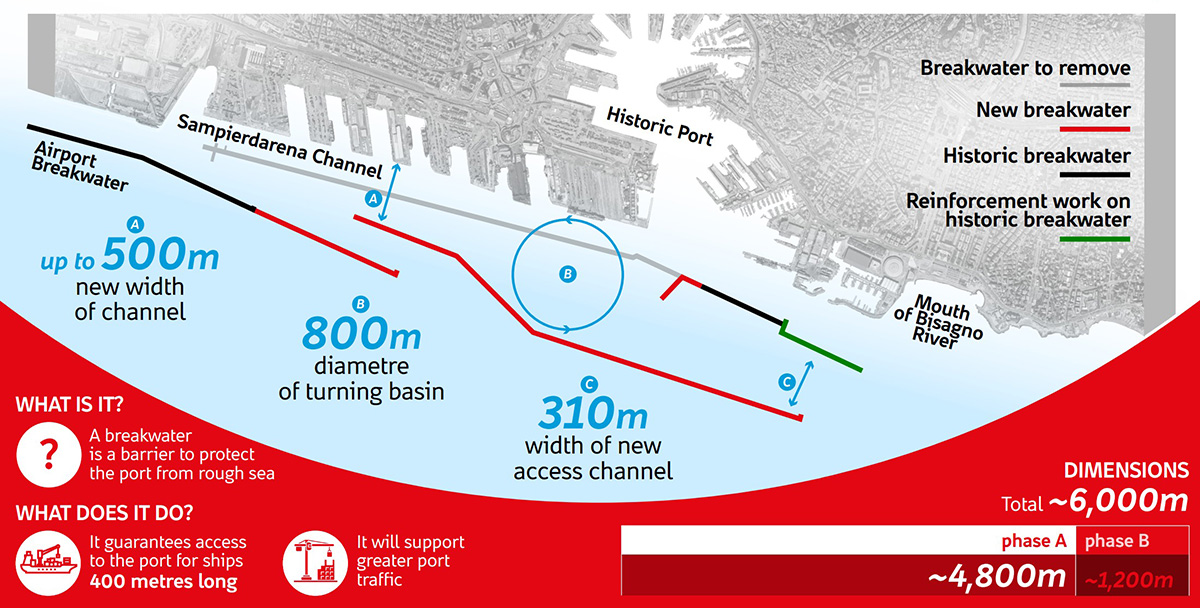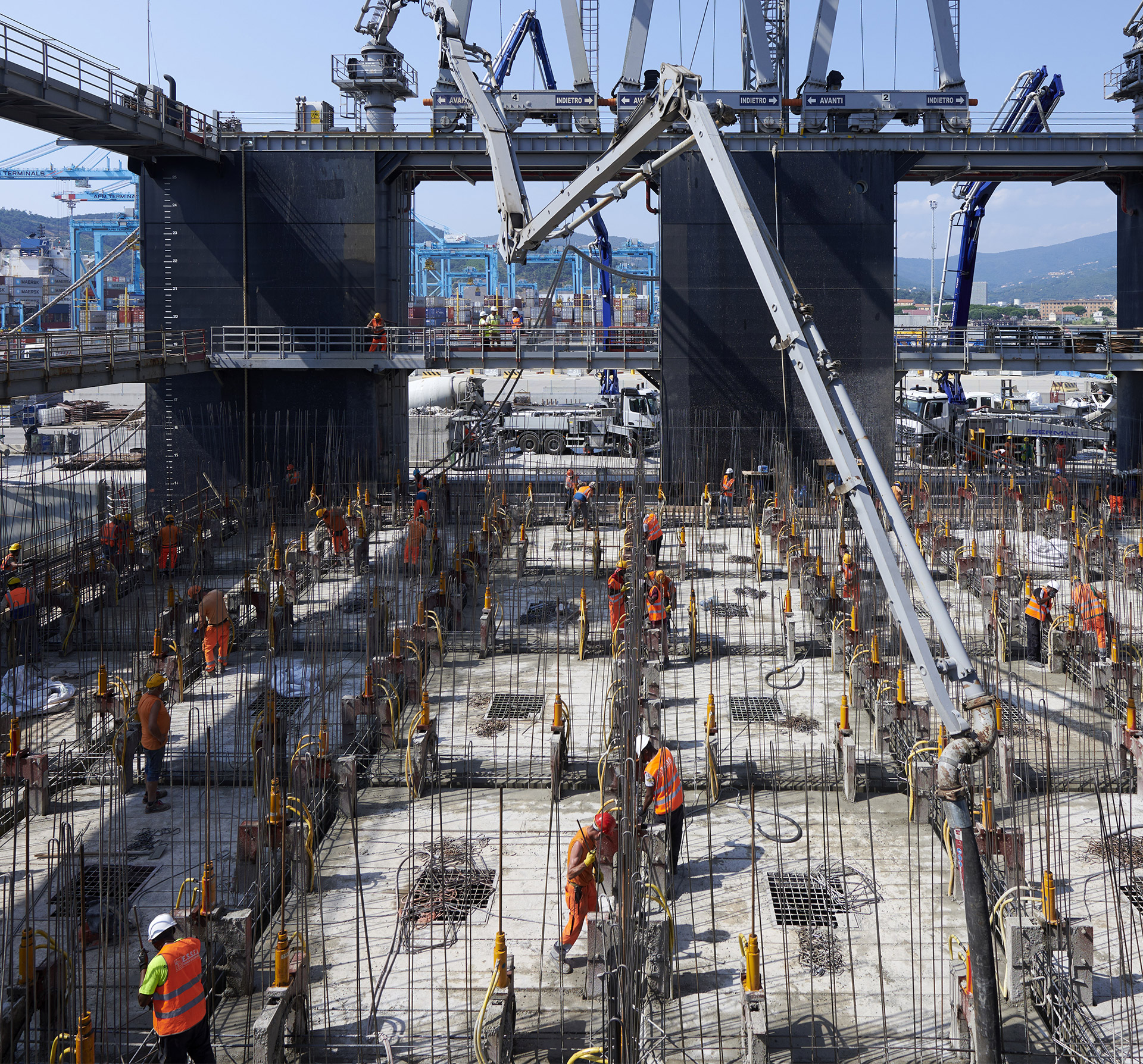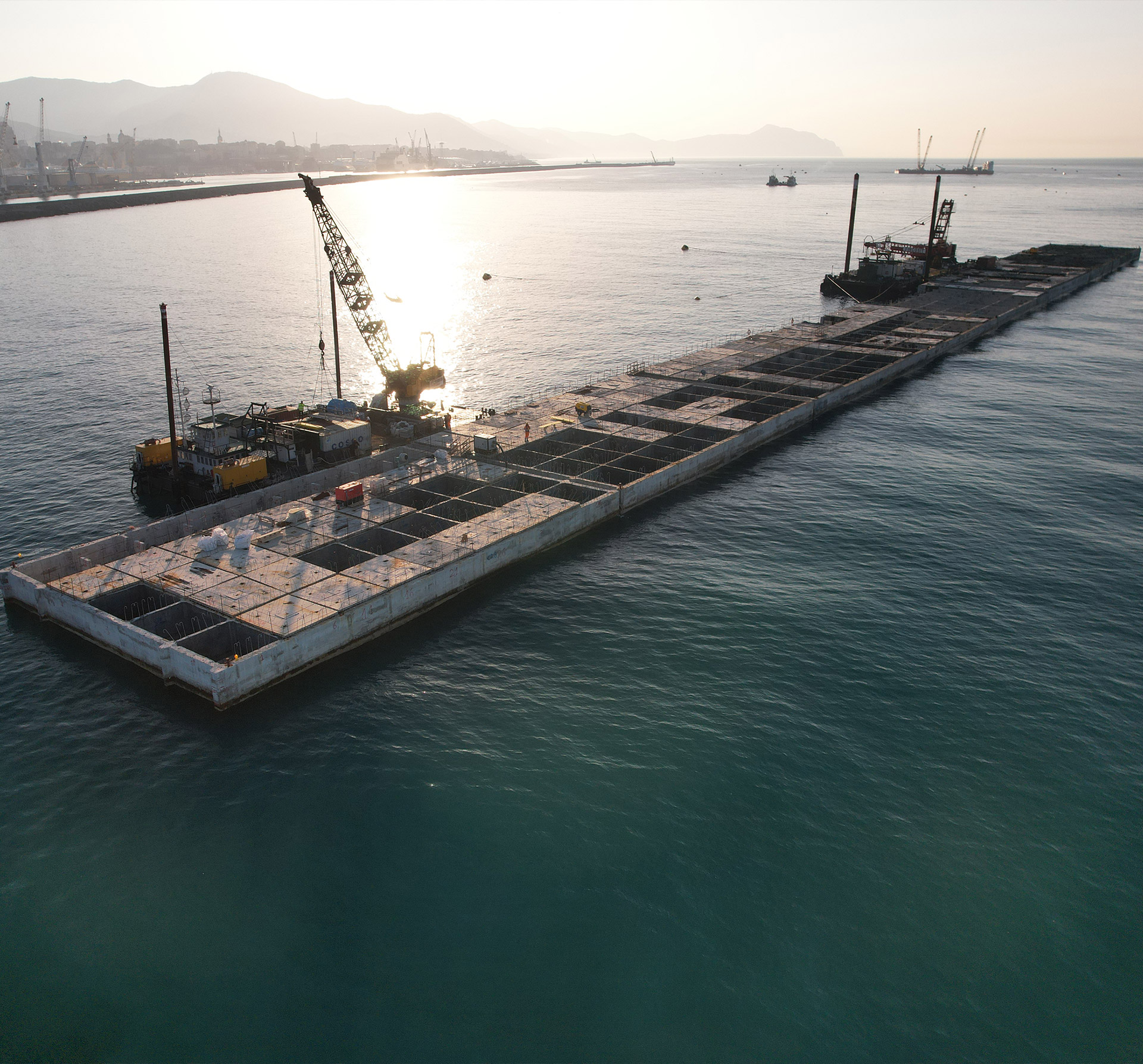A look into the depths of the sea: technical innovation and timing
The New Breakwater of Genoa is a unique work in the world for complexity, size, and positive effects on the city and on the country system, as well as being the largest intervention ever for the strengthening of Italian ports.
Thanks to the realization of this work, Genoa is a candidate to become a center of gravity for large ships and a great logistics hub for trade in Europe.
The new breakwater will allow large container ships, over 400 meters long and 60 meters wide, and "World Class" cruise ships to enter the port of Genoa. It will also allow the port to compete with Europe's most important ports, capitalizing on the advantage of the optimal geographical position right at the centre of Asia and the Americas. Genoa in fact is much closer to the large Asian ports compared to ones in the North of Europe: approximately 1,000 nautical miles less that - once the new breakwater is ready - will be a formidable competitive advantage.
The project is being carried out on behalf of the Western Ligurian Sea Port Authority.
Genoa's New Breakwater is an impressive and one-of-a-kind engineering feat: its foundation will rest on a seabed that reaches a record depth of 50 meters, and in its final configuration will reach an overall length of about 6,000 meters. 9 million tons of rock material will be used to build the basement, on which precast concrete elements will be laid: more than 70 cellular caissons will be placed for the first 4,800 m of the dam.
The caissons will measure up to 33 meters in height (like a ten-story building), 30 meters in width, and over 67 metres in length.

Genoa's New Breakwater is an impressive and one-of-a-kind engineering feat: its foundation will rest on a seabed that reaches a record depth of 50 meters, and in its final configuration will reach an overall length of about 6,000 meters. 9 million tons of rock material will be used to build the basement, on which precast concrete elements will be laid: more than 90 cellular caissons will be placed for the first 4,800 m of the dam.
The caissons will measure up to 33 meters in height (like a ten-story building), 30 meters wide and 67 meters long.
The works are divided into two phases: in the first phase, which will be completed in 2027, the new eastern entrance will be built. It will have a new access channel that is over 300 metres wide, with an extension of the manoeuvring space for ships (turning circle of 800 metres). The Sampierdarena channel will be widened to 500 metres, thus increasing the operational capacity and competitiveness of all the terminals in the historic commercial basin. During the second phase, which will be completed in 2030, the section of the breakwater extending from the airport will be completed, and the existing breakwater will be dismantled.

Project's technical data
Consolidation of the seabed
The first phase of the works includes the setting of 70,000 gravel piles measuring between 6 and 13.5 metres in length to provide stability for the base of the breakwater. Their installation involves 3 floating platforms of various sizes. The largest one is over 4,000sq metres and is equipped with four cranes. The 2.7 million tonnes of gravel to build the columns are transported and poured on the seabed using ships, among which the motorship Maria Vittoria Z and the bulk carrier Sider Olympia capabel of transporting 40,000 tons of gravel per trip by sea.
The gravel piles shall support the base built with the use of 9 million tons of rock material (partly taken from dismantling the existing dam, with a circular economy perspective, partly taken from the quarries of Liguria, Tuscany, Sardinia and Cartagena (Spain). Material is transported by the ship Fabio Duò, the ICS Orion ship and the bulk carrier Sider Onda capabel of transporting 40,000 tons of stone material.
The gravel colums will be built using an innovative technique named “Wet Top Feed – Blanket Method”. The technique foresees using a vibrating probe called vibroflot, a needle-like element whose length ranges from 17 to 21 metres. The probe, connected to 40-metre-high cranes positioned on floating platforms (pontoons), is taken down to the seabed, to a previously positioned strata of gravel, to build columns that reach 13 metres in height. Vibrating, and by using combined water-air jets, the probe penetrates the seabed creating a tube-like space into which the overlying gravel flows. As the latter flows, the future columns takes shape and are progressively made more compact.








